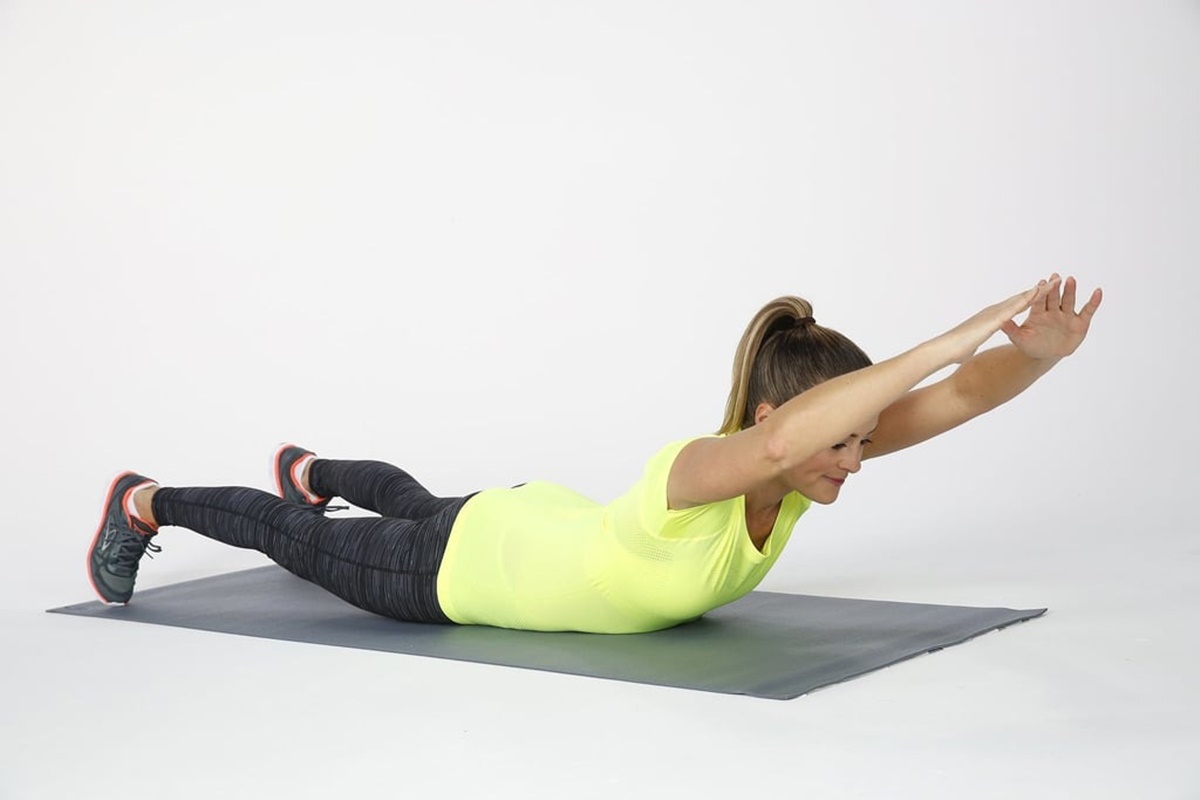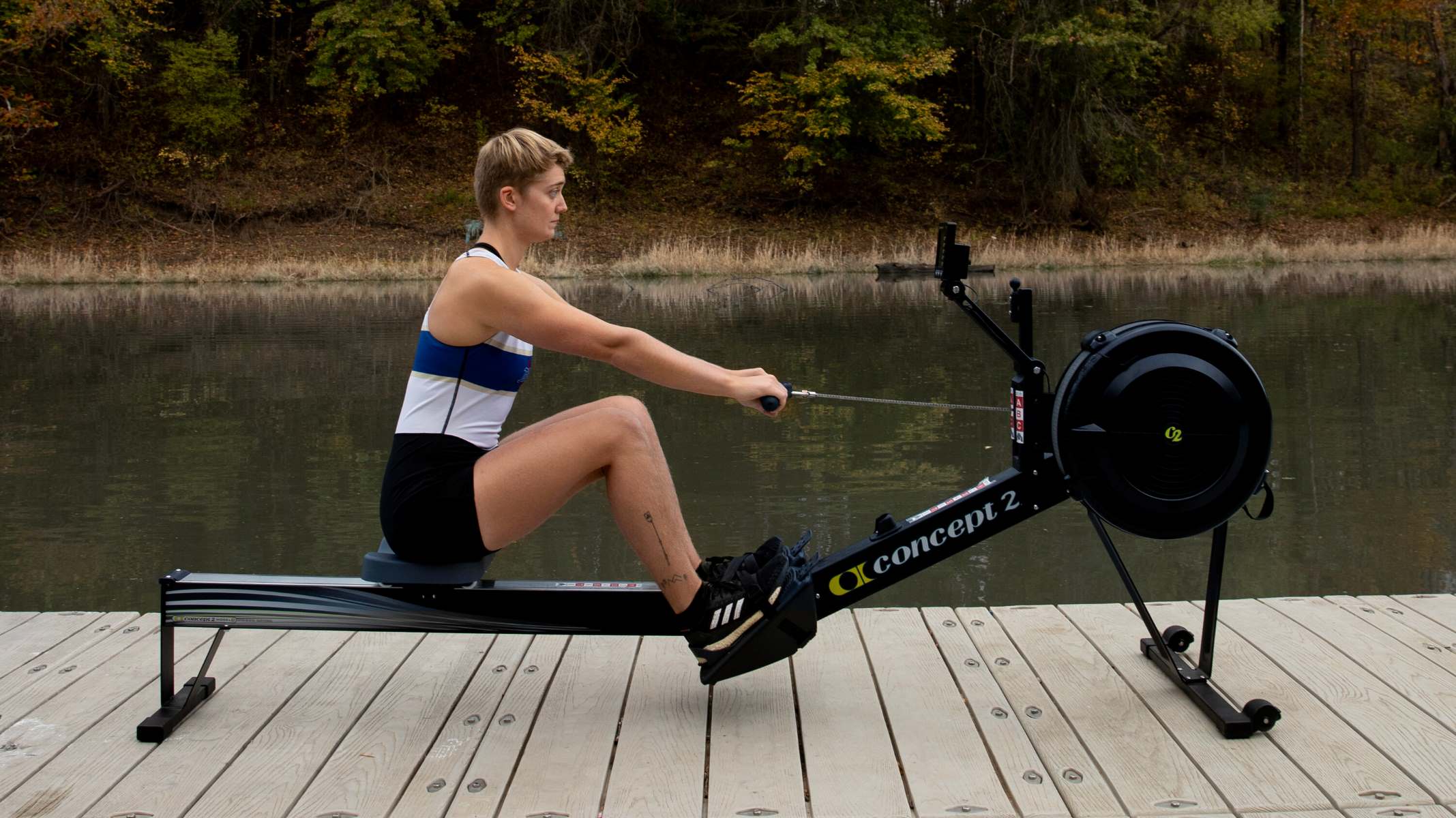

Featured
How To Workout With A Shoulder Injury
Modified: January 2, 2024
Learn how to workout with a shoulder injury! Our featured guide provides safe and effective exercises to help you stay active and recover faster.
Introduction
Exercising is an essential part of maintaining a healthy lifestyle. However, when faced with a shoulder injury, your regular workout routine can become a challenge. Shoulder injuries are not uncommon and can occur due to various reasons such as overuse, trauma, or improper form during exercises.
While it can be frustrating to have limitations placed on your workouts, it is crucial to prioritize your shoulder health to prevent further damage and promote proper healing. This article aims to provide insights and guidance on how to work out with a shoulder injury, helping you stay active while avoiding exacerbating your condition.
Before diving into specific exercises and modifications, it is important to understand the nature of shoulder injuries. Shoulders are complex joints that involve a network of muscles, tendons, and ligaments. Common shoulder injuries include rotator cuff tears, shoulder impingement, bursitis, and tendonitis.
If you’ve recently experienced a shoulder injury or are currently in the recovery phase, it is highly recommended to consult with a healthcare professional such as a doctor or a physiotherapist. They can provide a proper diagnosis, assess the extent of the injury, and provide personalized recommendations based on your condition.
Modifying your exercise routine is crucial when working out with a shoulder injury. It’s important to avoid any exercises that cause pain or discomfort to the affected shoulder. Instead, focus on gentle movements that promote flexibility, stability, and strength without aggravating the injury.
Including specific exercises tailored to shoulder injury recovery can help in the rehabilitation process. These exercises are designed to strengthen the surrounding muscles, improve range of motion, and provide stability to the injured shoulder. However, it is vital to perform these exercises correctly and under the guidance of a healthcare professional or a qualified trainer.
Rest and recovery are equally important when working out with a shoulder injury. This allows your body to repair and rebuild damaged tissues, preventing further complications. Make sure to give your shoulder enough time to heal and avoid overexertion, especially in the initial stages of recovery.
Proper warm-up and cool-down routines should not be neglected, even if your workout intensity is reduced due to a shoulder injury. Warm-up exercises increase blood flow, loosen up muscles, and prepare the body for the upcoming exercise. Cooling down after a workout helps to gradually return your body to a resting state, reducing the risk of stiffness and soreness.
Listening to your body and understanding its limitations play a crucial role in working out with a shoulder injury. Pay attention to any pain, discomfort, or signs of overexertion during your workouts. If something doesn’t feel right, it’s important to modify or stop the exercise to prevent further injury.
In some cases, seeking professional help from a physical therapist or undergoing a dedicated rehabilitation program may be necessary. Physical therapy can provide targeted exercises, manual therapy techniques, and additional guidance to aid in the recovery of your shoulder injury.
By following the guidelines, modifying exercises, and giving your shoulder proper care, you can continue to stay active and maintain a healthy lifestyle even with a shoulder injury. Remember, the road to recovery may take time, so be patient and prioritize your shoulder’s well-being above all else.
Understanding Shoulder Injuries
Shoulder injuries can range from mild to severe and can be debilitating if not properly addressed. Understanding the different types of shoulder injuries can help you navigate your workout routine while taking appropriate precautions.
One common shoulder injury is a rotator cuff tear. The rotator cuff is a group of muscles and tendons that surround the shoulder joint, providing stability and allowing for a wide range of motion. Overuse, trauma, or age-related degeneration can lead to a tear in one or more of these tendons. Symptoms of a rotator cuff tear include pain, weakness, and limited movement in the shoulder.
Shoulder impingement occurs when the space between the acromion (part of the shoulder blade) and the rotator cuff tendons narrows. This can cause the tendons to rub or get pinched when you lift your arm, resulting in pain and inflammation. Shoulder impingement is often caused by repetitive overhead movements, such as throwing or swimming.
Bursitis is another common shoulder injury where the fluid-filled sacs in the shoulder joint, called bursae, become inflamed. Bursitis can cause pain, swelling, and limited mobility in the shoulder. It can be caused by repetitive motions or direct trauma to the shoulder.
Tendonitis, also known as tendinitis, is the inflammation or irritation of the tendons in the shoulder. This can result from repetitive motions, overuse, or sudden impact. Tendonitis causes pain and tenderness in the affected area and can make it difficult to perform certain movements.
Shoulder injuries can be acute, resulting from a sudden trauma or accident, or they can develop over time due to repetitive stress or poor biomechanics. It is important to be aware of the signs and symptoms of shoulder injuries to seek appropriate treatment and prevent further damage.
Common symptoms of shoulder injuries include pain, swelling, stiffness, weakness, and limited range of motion. If you experience any of these symptoms, it is important to consult with a healthcare professional to determine the cause and severity of your injury.
Diagnosing a shoulder injury often involves a physical examination, medical history review, and imaging tests such as X-rays, ultrasounds, or MRI scans. Once a diagnosis is made, the healthcare professional will recommend an appropriate treatment plan, which may include rest, physical therapy, medication, or, in severe cases, surgery.
Understanding the specific type and severity of your shoulder injury is crucial in determining the appropriate modifications and exercises to incorporate into your workout routine. It is always advisable to work closely with a healthcare professional or a qualified fitness trainer to ensure you are following the right course of action and preventing further injury.
Consulting with a Healthcare Professional
When dealing with a shoulder injury, it is always recommended to consult with a healthcare professional, such as a doctor or a physiotherapist, before resuming or modifying your exercise routine. Seeking professional guidance is crucial for proper diagnosis, treatment, and tailored recommendations based on your specific condition.
A healthcare professional will conduct a thorough assessment of your shoulder injury, taking into consideration your medical history, the mechanism of injury, and any symptoms you are experiencing. They may perform physical tests to assess your range of motion, strength, and stability in the affected shoulder.
During the consultation, it is important to provide the healthcare professional with detailed information about your injury, including how it occurred, any previous treatments or interventions, and the current level of pain or discomfort you are experiencing. This information will help them in formulating an appropriate treatment plan.
Based on the diagnosis, the healthcare professional will provide you with specific instructions and recommendations tailored to your injury. They may advise you to temporarily refrain from certain activities or movements that could aggravate the injury. Additionally, they may suggest modifications to your exercise routine to accommodate the injury and promote proper healing.
In some cases, further diagnostic tests such as X-rays, ultrasounds, or MRI scans may be required to gather more detailed information about the extent of the injury. These tests can help identify any fractures, tears, or other underlying issues that may require additional treatment or intervention.
Working closely with a healthcare professional throughout the recovery process is essential. They can monitor your progress, make adjustments to your treatment plan as needed, and provide ongoing support and guidance. They may also recommend complementary treatments such as physical therapy, manual therapy, or other modalities that can aid in your recovery.
Remember, every shoulder injury is unique, and what works for one person may not work for another. By consulting with a healthcare professional, you can ensure that you are receiving the most appropriate and effective care for your specific condition. They will provide you with the tools and knowledge necessary to safely navigate your workout routine and optimize your recovery.
Modifying Your Exercise Routine
When dealing with a shoulder injury, it is crucial to modify your exercise routine to prevent further damage and promote healing. By making appropriate adjustments, you can still maintain an active lifestyle while protecting your shoulder from excessive strain and stress.
The first step in modifying your exercise routine is to avoid any activities or exercises that cause pain, discomfort, or worsening of your shoulder injury. This may mean temporarily eliminating certain exercises or movements that directly involve the shoulder joint. It’s important to listen to your body and not push through the pain.
Instead of completely avoiding physical activity, focus on maintaining a balance between rest and modified exercises that target other areas of your body. This can help preserve your overall fitness level and prevent deconditioning during the recovery process.
Low-impact exercises that do not put excessive stress on the shoulder joint are often recommended. These can include activities like walking, swimming, or cycling. These exercises provide cardiovascular benefits while minimizing the strain on your injured shoulder.
Incorporating exercises that promote flexibility, stability, and strengthening of the surrounding muscles can also be beneficial. Engaging in activities such as yoga or Pilates can help improve overall body alignment, posture, and core stability, which can indirectly support the healing process in your shoulder.
Resistance training can be revised to focus on exercises that target muscles away from the injured shoulder. For example, if you have a right shoulder injury, you can perform exercises that primarily engage the muscles on the left side of your body, maintaining a balanced muscular development without placing undue stress on your injured shoulder.
When modifying your exercise routine, it is important to start with lighter weights or resistance and gradually progress as tolerated. This allows your injured shoulder to slowly adapt to the increased demands and reduces the risk of reinjury.
Implementing proper form and technique during exercises is crucial to prevent unnecessary strain on your shoulder. Focus on maintaining proper posture and alignment throughout the movements. If needed, seek guidance from a qualified fitness professional to ensure you are performing exercises correctly and safely.
Remember to incorporate adequate rest periods between workouts to allow your body, including your injured shoulder, to recover. Overtraining or pushing through excessive fatigue can lead to increased inflammation and delayed healing.
Lastly, it’s vital to stay consistent with your modified exercise routine and be patient with the progress. Recovery from a shoulder injury takes time, and rushing the process can lead to setbacks. Focus on small improvements and celebrate each milestone along the way to keep motivated and maintain a positive mindset.
In summary, modifying your exercise routine is essential when dealing with a shoulder injury. By avoiding activities that cause pain, focusing on low-impact exercises, and incorporating movements that promote flexibility, stability, and strength, you can continue to stay active while giving your shoulder the opportunity to heal.
Importance of Rest and Recovery
When it comes to working out with a shoulder injury, one of the most important aspects to consider is the importance of rest and recovery. Resting and allowing your shoulder to heal is crucial for proper rehabilitation and preventing further damage to the injured area.
Resting doesn’t mean complete inactivity. Instead, it involves modifying your activities and taking a break from exercises that put excessive stress or strain on your injured shoulder. This allows your body to redirect its energy towards the recovery process.
Without proper rest, your shoulder injury may worsen, leading to prolonged recovery time or even the development of chronic conditions. Overuse or continuing to push through the pain can further damage the injured tissues, delaying the healing process.
Rest and recovery are essential for tissue repair. During rest periods, the body can focus on rebuilding and regenerating damaged cells and tissues in the shoulder. This helps in reducing inflammation, promoting healing, and restoring normal function.
Moreover, rest allows the surrounding muscles and structures to relax and recover. When you exercise, various muscles and tendons work together to facilitate movement. In the case of a shoulder injury, providing rest to these structures helps reduce stress and prevent additional strain on the injured area.
It is important to note that rest and recovery are not just limited to taking time off from exercise. It also encompasses other aspects such as getting enough sleep, maintaining a balanced diet, and managing stress levels. Adequate sleep is crucial as it allows the body to repair and regenerate tissues, while a healthy diet provides essential nutrients to support the healing process.
Stress can have a negative impact on the body’s ability to heal. Chronic stress can weaken the immune system, impairing the body’s ability to repair injured tissues. Therefore, practicing stress management techniques such as meditation, deep breathing exercises, or engaging in relaxing activities can be beneficial in promoting optimal recovery.
It’s important to work closely with a healthcare professional or a qualified trainer who can guide you on the appropriate duration and intensity of rest based on the specifics of your shoulder injury. They can provide personalized recommendations and monitor your progress throughout the rest and recovery process.
Remember, rest and recovery should be viewed as an essential part of the healing journey rather than an inconvenience. It allows your body the time it needs to heal and rebuild, ultimately leading to a faster and more successful recovery. So, be patient, give your shoulder the rest it deserves, and trust in the healing process.
Specific Exercises for Shoulder Injury
When working out with a shoulder injury, it’s important to include specific exercises that promote healing, strengthen the surrounding muscles, and improve mobility without exacerbating the injury. These exercises should be performed under the guidance of a healthcare professional or a qualified trainer to ensure proper form and technique.
One effective exercise for shoulder injuries is the pendulum swing. Stand with one hand resting on a table or chair for support. Let your injured arm hang freely, and gently swing it forward and backward, side to side, and in circular motions. This exercise helps improve shoulder mobility and promotes fluid movement without putting too much strain on the injured area.
The shoulder blade squeeze is another beneficial exercise. Sit or stand with proper posture and gently squeeze your shoulder blades together. Hold the squeeze for a few seconds before releasing. This exercise helps strengthen the muscles that support the shoulder joint and improve stability.
Scapular retractions are also effective for shoulder injuries. Stand or sit with proper posture and gently pull your shoulder blades back and down, as if you are squeezing a pencil between them. Hold the position for a few seconds before releasing. This exercise helps improve posture and strengthens the muscles that stabilize the shoulder.
External rotations with resistance bands can help strengthen the rotator cuff muscles. Secure a resistance band to a stationary object at waist height. Stand with your injured arm holding the band and your elbow bent at a 90-degree angle. Keep your upper arm against your side and rotate your forearm outward, away from your body. Slowly return to the starting position and repeat for several repetitions. This exercise targets the rotator cuff muscles and helps improve shoulder stability.
Wall push-ups are a modified version of regular push-ups that can be beneficial for individuals with shoulder injuries. Stand facing a wall and place your hands on the wall at shoulder height. Keep your body straight as you lower your chest towards the wall by bending your elbows. Push back to the starting position. This exercise helps strengthen the chest, shoulders, and arms with less strain on the injured shoulder.
It is important to note that the specific exercises mentioned above may not be suitable for all types of shoulder injuries. The exercises should always be performed within your pain tolerance and under the guidance of a healthcare professional or a qualified trainer.
Additionally, incorporating stretches and range of motion exercises that gently move the injured shoulder can help improve flexibility and prevent stiffness. Examples include shoulder rolls, cross-body stretches, and arm circles. These exercises should be performed with caution and modified as necessary to avoid pain or discomfort.
Remember, the goal of these specific exercises is to promote healing, strengthen the supporting muscles, and gradually improve the range of motion in your injured shoulder. It is important to be patient, listen to your body, and consult with a healthcare professional to ensure you are performing the appropriate exercises for your specific injury.
Proper Warm-up and Cool-down
Before engaging in any physical activity, including workouts with a shoulder injury, it’s essential to prioritize proper warm-up and cool-down routines. These routines not only help prevent injuries but also prepare your body for exercise and promote recovery afterward.
A warm-up is a crucial component of any workout, as it prepares your body for the upcoming physical activity. It increases blood flow to the muscles, raises body temperature, and loosens up the joints, making them more flexible and less prone to injury.
When warming up with a shoulder injury, it’s important to focus on gentle exercises that target the entire body. You can start with some light cardio exercises such as brisk walking, jogging in place, or cycling on a stationary bike. These activities warm up the muscles and increase circulation throughout the body.
After the cardio warm-up, it’s beneficial to perform dynamic stretches that specifically target the muscles and joints involved in your workout. For example, you can gently swing your arms back and forth or perform arm circles to gently mobilize the shoulder joint.
Incorporating resistance band exercises during the warm-up can also be beneficial. This helps activate the muscles surrounding the injured shoulder and prepares them for the upcoming workout. For example, performing bicep curls or lateral raises with a light resistance band can help warm up and engage the shoulder muscles.
Cooling down after a workout is equally important, as it allows your body to gradually return to a resting state. It helps prevent dizziness, stiffness, and post-exercise soreness. A proper cool-down routine can also aid in the recovery process, reducing the risk of delayed onset muscle soreness (DOMS).
Similar to the warm-up, a cool-down should include gentle exercises that promote active recovery. You can end your workout with low-intensity cardio exercises such as walking or slow cycling to gradually reduce your heart rate and bring your body back to a relaxed state.
Stretching exercises are also beneficial during the cool-down. Performing static stretches, where you hold a stretch for 20-30 seconds without bouncing, can help improve flexibility and reduce muscle tightness. Focus on stretching the muscles in and around the shoulder joint, such as the chest, back, and neck.
During the cool-down, it’s essential to listen to your body and provide gentle care to your injured shoulder. Avoid any stretches or movements that cause pain or discomfort. Modify the stretches as needed to accommodate your shoulder injury, ensuring that you feel a gentle stretch without crossing the line into discomfort.
Incorporating self-massage or foam rolling techniques during the cool-down can also help in releasing muscle tension and promoting relaxation. However, it’s important to avoid applying excessive pressure or force directly on the injured shoulder to prevent further damage.
By making proper warm-up and cool-down routines a consistent part of your shoulder injury workouts, you can enhance your overall performance, reduce the risk of injury, and facilitate proper recovery. Remember, these routines should be customized to your specific injury and can be modified as needed to ensure your shoulder is properly cared for before and after exercise.
Listening to Your Body
When working out with a shoulder injury, it is crucial to listen to your body and pay attention to its signals and limitations. Your body communicates its needs and limitations through pain, discomfort, or other physical sensations, and it is important to heed these messages to prevent further injury and promote healing.
One of the key aspects of listening to your body is recognizing the difference between “good pain” and “bad pain.” “Good pain” refers to the sensation of muscles working and stretching during exercise. It can feel uncomfortable but should not be sharp or unbearable. “Bad pain,” on the other hand, is sharp, intense, or causes a significant increase in discomfort. If you experience “bad pain” during a workout, it is important to stop the exercise and assess the cause.
Pay attention to the specific movements or exercises that trigger pain or discomfort in your shoulder. Your body is unique, and what may be tolerable for others may not be suitable for you. Modify or avoid movements that aggravate your injury, and focus on alternatives that allow you to work the same muscle groups or achieve similar fitness goals without compromising your shoulder health.
Another important aspect of listening to your body is recognizing signs of overexertion or fatigue. Pushing yourself beyond your limits can lead to increased inflammation and hinder the healing process. If you feel excessively tired, weak, or experience a significant decrease in performance, it may be a signal that you need to rest and allow your body time to recover.
Rest and recovery days are just as crucial as workout days when dealing with a shoulder injury. Overtraining or not giving your body enough time to repair and rebuild can delay the healing process and potentially worsen your shoulder injury. Allow yourself adequate time for rest, sleep, and recovery to ensure optimal progress and minimize the risk of reinjury.
It is also important to maintain open communication with a healthcare professional or a qualified trainer throughout your shoulder injury recovery journey. They can provide guidance, reassurance, and modifications to your exercise routine based on your progress and individual needs. Regular check-ins and evaluations can help ensure that you are on the right track and prevent any setbacks.
Remember, your body is unique, and its needs may vary from day to day. What felt possible yesterday may not be achievable today due to factors such as fatigue, stress, or the progression of your injury. Giving yourself grace and adjusting your workouts to accommodate your body’s current state is crucial for both physical and mental well-being.
Listening to your body is an ongoing process. As you continue to work out with a shoulder injury, pay attention to changes in pain levels, mobility, and overall well-being. Modify your workouts accordingly, focus on proper form and technique, and don’t be afraid to seek professional advice if needed. By listening to your body and honoring its needs, you can ensure a safe and effective recovery while working towards your fitness goals.
Seeking Physical Therapy or Rehabilitation
When dealing with a shoulder injury, seeking the expertise of a physical therapist or participating in a dedicated rehabilitation program can greatly enhance your recovery. Physical therapy provides specialized evaluation, treatment, and guidance to help you regain mobility, strength, and function in your injured shoulder.
A physical therapist will assess your shoulder injury and develop a personalized treatment plan based on your specific condition and goals. They will guide you through a series of exercises and techniques designed to improve your shoulder’s range of motion, stability, and strength.
Physical therapy exercises for shoulder injuries may include targeted stretching exercises to improve flexibility and mobility in the joint. These stretches focus on gently increasing the range of motion while taking into consideration the limitations imposed by your injury.
Strengthening exercises are another important component of physical therapy. They aim to improve the stability and strength of the muscles surrounding the injured shoulder. These exercises are often performed using resistance bands, weights, or bodyweight to gradually build strength without causing further strain or damage.
In addition to exercises, a physical therapist may employ manual therapy techniques to help mobilize and manipulate the soft tissues and joints of the shoulder. This can include massage, joint mobilizations, or soft tissue manipulation to improve joint alignment, relieve pain, and enhance overall shoulder function.
Physical therapy sessions may also incorporate modalities such as heat or cold therapy, ultrasound, electrical stimulation, or laser therapy. These modalities can aid in reducing pain, inflammation, and promoting healing in the injured shoulder.
Throughout the rehabilitation process, a physical therapist will closely monitor your progress and make adjustments to your treatment plan as necessary. They will provide guidance on proper form and technique, ensure appropriate exercise progression, and offer advice on how to modify your activities outside of therapy sessions to support your recovery.
Regular physical therapy sessions can not only help you recover from a shoulder injury but also provide education and strategies to prevent future injuries. Your physical therapist can teach you proper body mechanics, posture, and strengthening exercises to maintain shoulder health and prevent recurrence of the injury.
It’s essential to commit fully to your physical therapy program and actively participate in your own recovery. This means following the recommended exercise regimen, attending scheduled therapy sessions, and communicating any concerns or changes in your symptoms to your physical therapist.
While physical therapy is an important component of recovery, it is not a quick fix. It requires patience, consistency, and dedication to reap the benefits. Working with a qualified physical therapist will provide you with the support and expertise needed to maximize your recovery and return to your desired level of activity.
Remember, everyone’s recovery process is unique, and the duration of physical therapy will depend on the severity of your injury and how well you respond to treatment. Be open to the guidance of your physical therapist and trust in the process as you work towards regaining full functionality and strength in your shoulder.
Conclusion
Working out with a shoulder injury can be challenging, but with the right approach, it is possible to maintain an active lifestyle while promoting healing and preventing further damage. By understanding your shoulder injury, consulting with a healthcare professional, modifying your exercise routine, and prioritizing rest and recovery, you can navigate your workouts safely and effectively.
When dealing with a shoulder injury, it is crucial to listen to your body and be aware of its limitations. Pay attention to pain, discomfort, or signs of overexertion during exercise, and modify or stop any movements that aggravate your injury. Seek guidance from a healthcare professional or trainer to ensure you are performing exercises correctly and safely.
Proper warm-up and cool-down routines play a vital role in preparing your body for exercise and promoting recovery. Include exercises that gently mobilize the shoulder, target the surrounding muscles, and improve flexibility. Take the time to rest and recover, allowing your body the opportunity to repair and rebuild the injured tissues.
In some cases, seeking the expertise of a physical therapist or participating in a dedicated rehabilitation program can greatly enhance your recovery. Physical therapy provides personalized treatment, guidance, and support to help you regain shoulder mobility, strength, and function.
Remember, recovery from a shoulder injury takes time, patience, and dedication. Each person’s journey to healing is unique, and it is essential to respect the process. Stay committed to your treatment plan, follow the guidance of healthcare professionals, and trust in your body’s ability to heal.
By implementing these strategies and incorporating modifications as needed, you can continue to work out with a shoulder injury while ensuring your overall well-being and supporting your journey towards optimal shoulder health.









